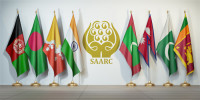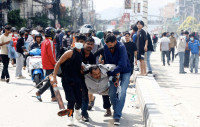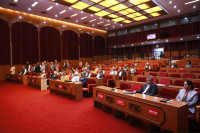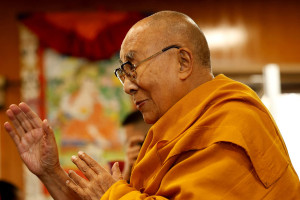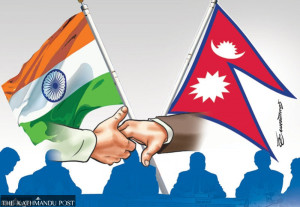Columns
Central Asia’s diverse Covid-19 responses
Some governments were slow to prepare for the virus’s arrival even after recognising the threat early.
Djoomart Otorbaev
Covid-19’s impact on my country, Kyrgyzstan, first hit home for me on March 19, when my son arrived at Bishkek’s international airport from a ‘highly infected’ European country. I was unable to see him because, along with several dozen others who arrived on the flight with him, he was immediately subjected to a 14-day quarantine at a former American military base that the United States donated to the country in 2014.
But it was a quarantine in name only. The former base was chaotic and disorganised. Instead of being strictly isolated from one another, arriving passengers were confined to a completely unprepared and tightly fenced area, where they moved and interacted freely.
Moreover, hygiene was practically non-existent, with few toilets, washbasins, or showers for more than a hundred people. So, this attempt to prevent the coronavirus from entering the country was, in fact, creating ideal conditions for infection to spread among new arrivals.
Five days later, and without any explanation, all of the isolated passengers were released into ‘home quarantine’. I heard later that at least one of them had tested positive for Covid-19, but even today, nobody knows whether the passengers have infected anyone else.
This and numerous other episodes demonstrate how completely unprepared Kyrgyzstan and, it seems, our Central Asian neighbours were for the virus. The government has tacitly admitted as much. A few days after the quarantined passengers were released, the country’s chief sanitary officer left his post. And on April 1, both the deputy prime minister and the health minister were fired.
This muddled response to the Covid-19 threat seems incongruous, because the Kyrgyz authorities had initially taken appropriate, timely decisions. On January 27, the State Security Council recommended that the government ‘prevent the entry of coronavirus infection into the country’. But, despite acknowledging the problem a month and a half before Kyrgyzstan reported its first case of Covid-19, the authorities then did virtually nothing.
For example, the government was well aware that many Kyrgyz citizens were making the obligatory Muslim pilgrimage to Mecca earlier this year. They returned to Kyrgyzstan on March 12, and some of them subsequently were among the first citizens to be diagnosed with Covid-19.
And yet the government seemed paralysed. It failed to purchase enough reagents, testing kits, protective suits, and other necessary equipment, and did not prepare observation and quarantine facilities. The returnees from Mecca were not tested until March 18, by which time they could have infected others. And following the positive tests, the Kyrgyz authorities did not carry out any contact tracing.
Kyrgyzstan was not alone among Central Asian countries in its relatively slow response to the pandemic. Kazakhstan reported its first confirmed Covid-19 case on March 13 and Uzbekistan two days later. And after weeks of denials, Tajikistan finally confirmed its first case only on April 30, perhaps not coincidentally just a few hours before the arrival of a World Health Organisation mission in the country.
Turkmenistan remains the only Central Asian country, and one of the very few in the world, that has reported no Covid-19 cases to date (its government recently declined to invite a WHO mission to visit the country). As of May 19, the other four Central Asian countries had reported a relatively modest combined total of 12,525 cases, or about 169 per million inhabitants, and in total a quite modest 106 deaths.
The numbers from Uzbekistan, Kazakhstan, and Kyrgyzstan can perhaps be trusted. These countries’ governments provide a few updates about the pandemic each day, while the situation is actively discussed in independent media (including foreign outlets) and on social media platforms. Non-governmental organisations also have a critical monitoring role to play, which is why the Kyrgyz government’s ongoing attempts to restrict these groups’ activities are particularly worrying.
The Turkmen and Tajik authorities are traditionally less open with the media. But Radio Free Europe/Radio Liberty (RFE/RL), which has sources in both countries, recently reported that the Turkmen authorities had transferred more than 400 people from a quarantine zone in Turkmenabad, the country’s second-largest city, to small provincial hospitals. This followed other media reports alleging that the authorities were trying to hide coronavirus cases from the WHO.
But the situation in Tajikistan is currently causing the greatest concern, with the World Bank recently warning of up to 230,500 severe Covid-19 infections and as many as 21,000 deaths (the country’s population is about 9.3 million). The Tajik authorities are apparently beginning to recognise the danger. On May 1, the Asia-Plus news agency reported that Rustam Emomali, the mayor of the capital, Dushanbe, had addressed residents and urged them not to panic, assuring them that the state had enough resources to combat the pandemic.
Finally, Covid-19 has also created a serious problem for the estimated four-five million Central Asian migrants who live and work in Russia. Most of them are from Uzbekistan, Tajikistan, and Kyrgyzstan, and are a major source of remittances. Indeed, Tajikistan and Kyrgyzstan received remittances totalling about 30 percent of their GDP in 2019, and are among the world leaders in remittances per capita.
But many of these migrants have lost their jobs because of the pandemic, and border closures are preventing them from returning home. Although the Russian government’s decision to pay the migrants unemployment benefits will help, this is only a temporary solution. Their incomes and remittances will fall sharply, which will dramatically affect Central Asian economies.
Having recognised the Covid-19 threat early on, some of Central Asia’s governments were slow to prepare for the coronavirus’s eventual arrival. And with the pandemic’s biggest, mainly economic challenges still to come to the region, the real problems may lie ahead.
***
What do you think?
Dear reader, we’d like to hear from you. We regularly publish letters to the editor on contemporary issues or direct responses to something the Post has recently published. Please send your letters to [email protected] with "Letter to the Editor" in the subject line. Please include your name, location, and a contact address so one of our editors can reach out to you.




 7.12°C Kathmandu
7.12°C Kathmandu

